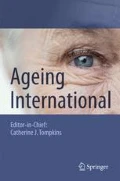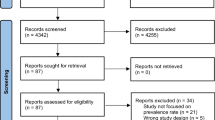Abstract
Developing countries in Latin America (LA) are experiencing rapid aging as a result of advances in medical interventions. This rapid aging has not occurred with comparable improvements in standards of living. Chronic conditions are becoming highly prevalent while exposure to infectious communicable diseases is very common. This unique situation where communicable and non-communicable diseases coexist in the presence of low socioeconomic status place countries in LA in a unique epidemiological situation. Mexico presents a very good example where the impact of this situation on health warrants further analysis. We use data from the Mexican National Health and Nutrition Survey (ENSANut 2006), a cross-sectional study representative of all urban and rural areas of Mexico. A total of 5,605 adults older than 60 years of age with valid values for Body Mass Index and Hemoglobin were analyzed. We first included a descriptive analysis of the coexistence of anemia and obesity by age, gender and characteristics of the living environment. We reported the weighted percentages for each covariate by each of four nutritional condition categories (obese and anemic, only-obese, only-anemic, not obese and not anemic). We used multinomial logit regressions to determine the association of socioeconomic characteristics, health status and the living environment with the presence of the three nutritional condition categories. In the ENSANut cohort 10.3% of older adults are anemic, 25.0% are obese and 2.6% are both anemic and obese. Approximately 62% has neither anemia nor obesity. Within the 38% that fall in the three nutritional condition categories, the co-existence of obesity and anemia appears to be associated with metropolitan area residence, living alone, being male, having relatively high wealth, and reporting two or more chronic health conditions. Analyzing the effect of the covariates to distinguish between outcome categories, living environment, age, gender, wealth, and smoking show a significant effect when comparing across the three nutritional categories. Older Mexican adults with both obesity and anemia have a different profile compared to that of adults with only one of the conditions. Future studies need to do a careful clinical evaluation of this group and design clinical interventions to avoid complications. Additionally, social support initiatives that target specific groups of older adults according to their health and social needs must be established.

Similar content being viewed by others
References
Al Snih, S., Ottenbacher, K. J., Markides, K. S., Kuo, Y. F., Eschbach, K., & Goodwin, J. S. (2007). The effect of obesity on disability vs mortality in older Americans. Archives of Internal Medicine, 167(8), 774–780.
Alley, D. E., & Chang, V. W. (2007). The changing relationship of obesity and disability, 1988–2004. JAMA, 298(17), 2020–2027.
Eisenstaedt, R., Penninx, B. W., & Woodman, R. C. (2006). Anemia in the elderly: Current understanding and emerging concepts. Blood Reviews, 20(4), 213–226.
Ferrucci, L., & Alley, D. (2007). Obesity, disability, and mortality: A puzzling link. Archives of Internal Medicine, 167(8), 750–751.
Frenk, J. (2006). Bridging the divide: Global lessons from evidence-based health policy in Mexico. Lancet, 368(9539), 954–961.
Garry, P. J., Goodwin, J. S., & Hunt, W. C. (1983). Iron status and anemia in the elderly: New findings and a review of previous studies. Journal of the American Geriatrics Society, 31(7), 389–399.
Grafova, I. B., Freedman, V. A., Kumar, R., & Rogowski, J. (2008). Neighborhoods and obesity in later life. American Journal of Public Health, 98(11), 2065–2071.
Hagedoorn, M., Van Yperen, N. W., Coyne, J. C., van Jaarsveld, C. H. A., Ranchor, A. V., van Sonderen, E., et al. (2006). Does marriage protect older people from distress? The role of equity and recency of bereavement. Psychology and Aging, 21(3), 611–620.
Ham-Chande, R., Palloni, A., & Wong, R. (2009). In N. van Nimwegen (Ed.), Aging in developing countries: Building bridges for integrated research agendas. Paris: IUSSP.
Harris, M. I., Flegal, K. M., Cowie, C. C., Eberhardt, M. S., Goldstein, D. E., Little, R. R., et al. (1998). Prevalence of diabetes, impaired fasting glucose, and impaired glucose tolerance in U.S. adults. The Third National Health and Nutrition Examination Survey, 1988–1994. Diabetes Care, 21(4), 518–524.
Izaks, G. J., Westendorp, R. G., & Knook, D. L. (1999). The definition of anemia in older persons. JAMA: The Journal of the American Medical Association, 281(18), 1714–1717.
Kaplan, N. M., & Opie, L. H. (2006). Controversies in hypertension. Lancet, 367(9505), 168–176.
Kinsella, K., & Wan, H. (2009). An aging world: 2008 - International population reports (pp. 1–175). Washington, DC: Census Bureau.
Kuri-Morales, P., Emberson, J., Alegre-Diaz, J., Tapia-Conyer, R., Collins, R., Peto, R., et al. (2009). The prevalence of chronic diseases and major disease risk factors at different ages among 150,000 men and women living in Mexico City: cross-sectional analyses of a prospective study. BMC Public Health, 9, 9.
Ledikwe, J. H., Smiciklas-Wright, H., Mitchell, D. C., Jensen, G. L., Friedmann, J. M., & Still, C. D. (2003). Nutritional risk assessment and obesity in rural older adults: A sex difference. American Journal of Clinical Nutrition, 77(3), 551–558.
Llanos, A., Oyarzun, M. T., Bonvecchio, A., Rivera, J. A., & Uauy, R. (2008). Are research priorities in Latin America in line with the nutritional problems of the population? Public Health Nutrition, 11(5), 466–477.
Long, J., & Freese, J. (2006). Regression models for categorical dependent variables using stata. College Station: Stata Press.
Mair, C. A., & Thivierge-Rikard, R. V. (2010). The strength of strong ties for older rural adults: Regional distinctions in the relationship between social interaction and subjective well-being. International Journal of Aging & Human Development, 70(2), 119–143.
Mendez-Luck, C. A., Kennedy, D. P., & Wallace, S. P. (2009). Guardians of health: the dimensions of elder caregiving among women in a Mexico City neighborhood. Social Science & Medicine, 68(2), 228–234.
Palloni, A., Pinto-Aguirre, G., & Pelaez, M. (2002). Demographic and health conditions of ageing in Latin America and the Caribbean. International Journal of Epidemiology, 31(4), 762–771.
Salinas, J. J., Al, S. S., Markides, K., Ray, L. A., & Angel, R. J. (2010). The rural-urban divide: Health services utilization among older Mexicans in Mexico. The Journal of Rural Health, 26(4), 333–341.
Shamah-Levy, T., Cuevas-Nasu, L., Mundo-Rosas, V., Morales-Ruan, C., Cervantes-Turrubiates, L., & Villalpando-Hernandez, S. (2008). Health and nutrition status of older adults in Mexico: Results of a national probabilistic survey. Salud Pública de México, 50(5), 383–389.
Smith, K. V., & Goldman, N. (2007). Socioeconomic differences in health among older adults in Mexico. Social Science & Medicine, 65(7), 1372–1385.
Todhunter, E. N., & Darby, W. J. (1978). Guidelines for maintaining adequate nutrition in old age. Geriatrics, 33(6), 49–6.
United Nations. (2005). Household sample surveys in developing and transition countries. New York: Department of Economic and Social Affairs, Statistics Division, Studies in Methods.
US CENSUS BUREAU (2011). Mid-year population by age and sex in 2000 and 2010 for Mexico, Latin America and Developed Countries.
Waite, L. J. (1995). Does marriage matter? Demography, 32(4), 483–507.
Wang, M. C., Kim, S., Gonzalez, A. A., MacLeod, K. E., & Winkleby, M. A. (2007). Socioeconomic and food-related physical characteristics of the neighbourhood environment are associated with body mass index. Journal of Epidemiology and Community Health, 61(6), 491–498.
Wanless, D., Mitchell, B. A., & Wister, A. V. (2010). Social determinants of health for older women in Canada: Does rural-urban residency matter? Canadian Journal on Aging, 29(2), 233–247.
WHO (2002). The World Health Report 2002: Reducing risks, promoting healthy life. WHO press.
WHO (2006). Global database on body mass index. WHO press.
WHO (2008). Worldwide prevalence of anaemia (pp. 1993–2005): WHO press.
Wong, R., & Espinoza Higgins, M. (2003). Income and assets of the population of middle and old age in Mexico. Papeles de Población, 37, 129–166.
Wong, R., & Palloni, A. (2009). Aging in Mexico and Latin America. In: Uhlenberg P (Ed.), International handbook of population aging (pp.231–252).: Springer.
Acknowledgements
This work was partly supported by grant R01HD051764-03 (PI A. Pebley) of the National Institute on Aging and the National Institute of Child Health and Human Development. Infrastructure support was provided by the Sealy Center on Aging at the University of Texas Medical Branch.
Author information
Authors and Affiliations
Corresponding author
Rights and permissions
About this article
Cite this article
Samper-Ternent, R., Michaels-Obregon, A. & Wong, R. Coexistence of Obesity and Anemia in Older Mexican Adults. Ageing Int 37, 104–117 (2012). https://doi.org/10.1007/s12126-011-9135-y
Published:
Issue Date:
DOI: https://doi.org/10.1007/s12126-011-9135-y



